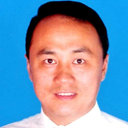[Study on diagnostic criteria of cervicogenic headache: a report of retrospective analysis on 330 cases].
Sleutelwoorden
Abstract
OBJECTIVE
To improve the diagnostic criteria of cervicogenic headache by summary the clinical features of cervicogenic headache in patients.
METHODS
Among 448 patients with the chief complaint of headache for the first visit from October 2008 to June 2009, 399 cases meet the diagnostic criteria, 330 cases were diagnosed as cervicogenic headache. There were 97 males and 233 females, ranging in age from 14 to 76 years, with an average of 46.1 years. The duration of the disease ranged from 0.33 to 50 years, with an average of 13.4 years. The gender, age, occupation, headache characteristics of the patients were recorded, and the tenderness point position and the range of diffuse pain were summarized for analysis.
RESULTS
There were 89.1% headache patients were cervicogenic headache, the male to female ratio was 1:2.4, 78.8% (260 cases) patients aged 21 to 60 years old, especially those 41 to 50 years old was the majority. There were 97.3% (321 cases) patients with paroxysmal headache, and only 2.7% (9 cases) patients had persistent headache. Majority patients had swelling pain (181 cases, accounting for 54.8%) or pulsatile pain (135 cases, accounting for 40.9%). Above two types pain may coexist, and other types were few. The position of headache concentrated at occiput, corona capitis and tempus, and could spread to the forehead, fossa orbitalis, or eye (about 1/3 patiens), very few spread to the ears, nasal wing or bridge of the nose, etc. There were 76.4% (252 cases) patients with full or bilateral headache, and only 12.1% (40 cases) with unilateral headache. Almost all the patients had symptoms of occipital nerve entrapment, among which about 73.3% (242 cases) patients had greater and lesser occipital large involved. There were 82.7% (273 cases) patients showing radiating pain by pressing the special point of occiput.
CONCLUSIONS
(1) Cervicogenic headache patients accounted for a higher proportion; (2) The existing diagnostic criteria is not perfect, and need to be improved; (3) Radiating pain occurred when pressing the specific location is an important diagnosis criteria.


